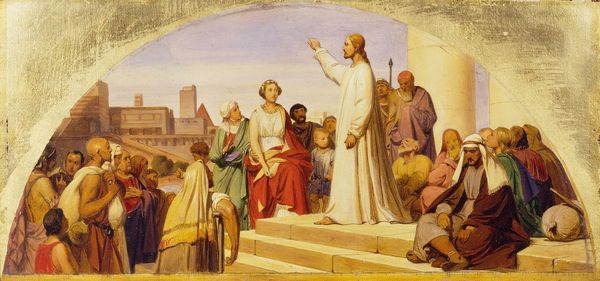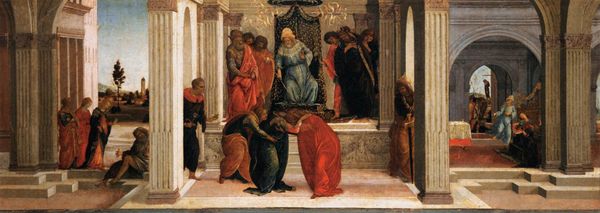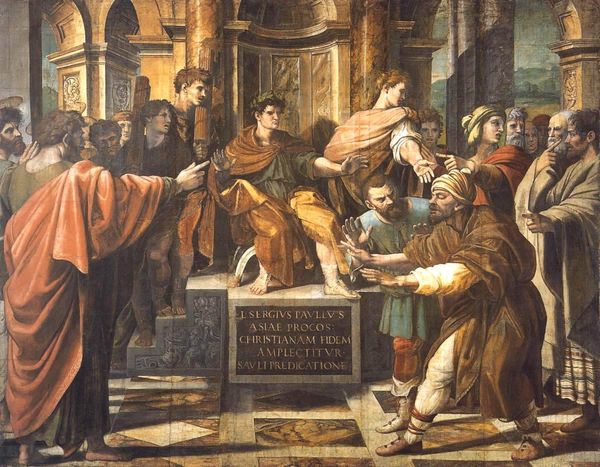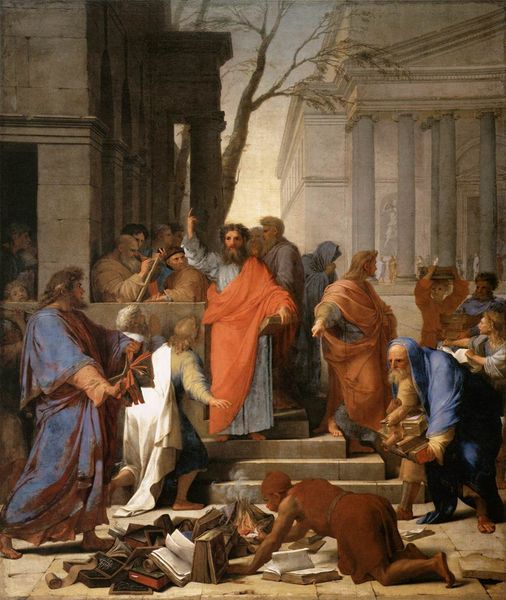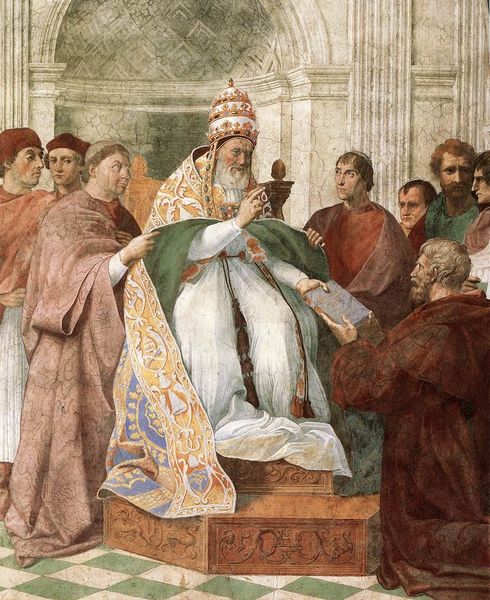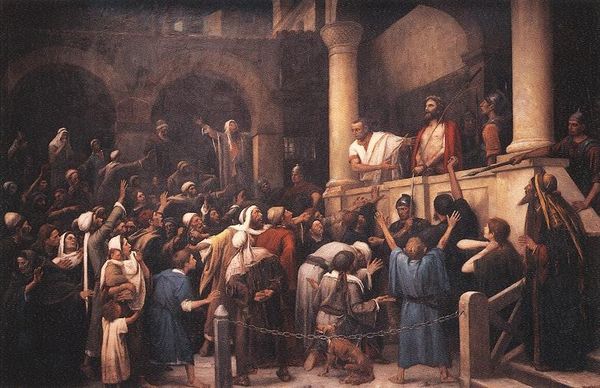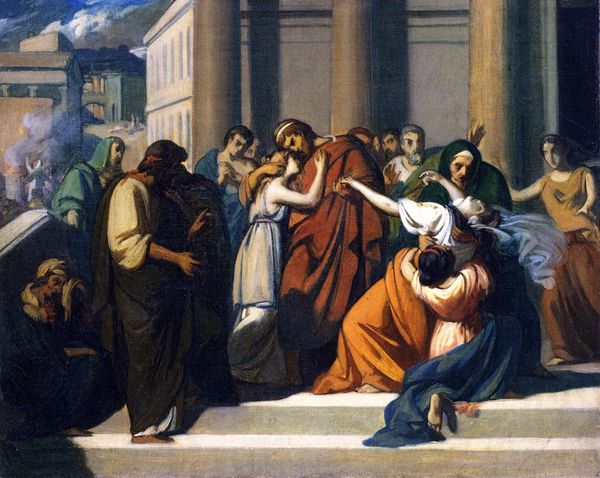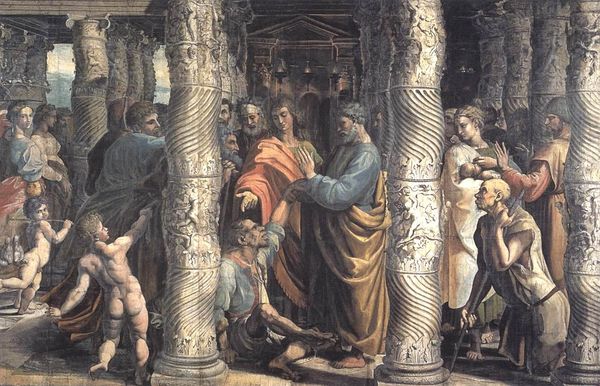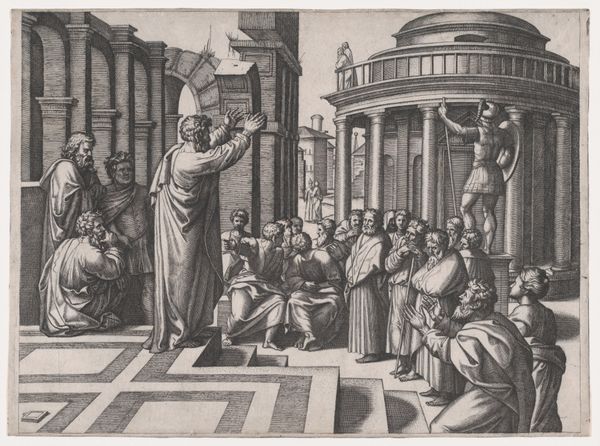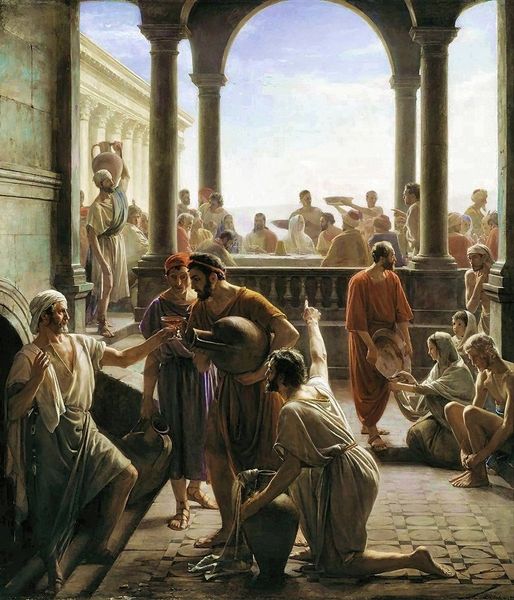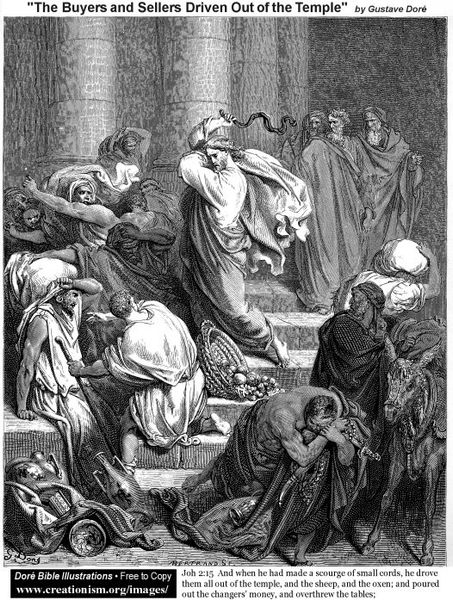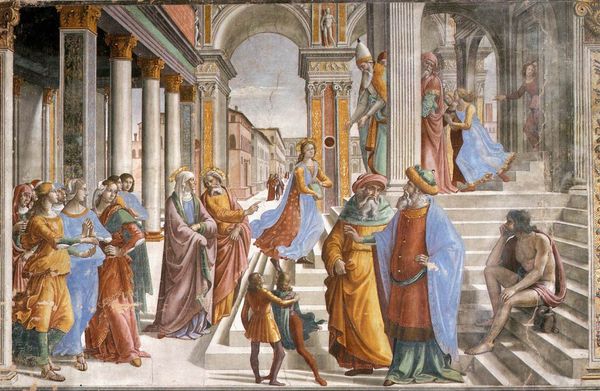
St. Paul Preaching at Athens (cartoon for the Sistine Chapel) 1515
0:00
0:00
painting, fresco
#
high-renaissance
#
narrative-art
#
painting
#
charcoal drawing
#
figuration
#
fresco
#
oil painting
#
classicism
#
history-painting
#
academic-art
#
italian-renaissance
#
realism
Copyright: Public domain
Curator: Look at this monumental cartoon, "St. Paul Preaching at Athens," created around 1515 by Raphael. It's currently held at the V&A in London. My first impression is how static everyone seems despite the implied fervor. Editor: Monumental indeed! What strikes me is the almost industrial feel of the architecture – those precise, repeating columns. It gives the impression of a public square staged like a factory floor for philosophical debate. Curator: Yes, the architecture plays a vital role. Note the raised platform. It creates a visual hierarchy, immediately drawing our eyes to St. Paul, posed, gesturing for his words to be heard, but also perhaps calling for balance or guidance. It mirrors a theater, making a metaphor for civic engagement. Editor: Exactly, a platform not just for religion, but a kind of early media hub. Who funded such a grandiose project? And consider the labor involved in creating something of this scale as simply a 'cartoon.' Curator: Commissioned by Pope Leo X for the Sistine Chapel tapestries, these cartoons served as full-scale guides. The subject—Paul’s address on the Areopagus—resonated with the Pope's desire to display Papal authority through powerful narratives, presented using the guise of this pivotal Biblical episode. Note the Roman soldier sculpture as a symbol of worldly dominance juxtaposed with faith. Editor: So, these were essentially templates, tools of mass religious textile production. It strips away a little of the mystique when we remember it's as much a production document as a 'work of art,' crafted with skilled labor and directed for explicit social messaging. The cost! Curator: But what is truly compelling is how Raphael masterfully integrates classical ideals with Christian narrative, signaling not a break with the past, but rather continuity, presenting Christianity as the rightful inheritor of Greco-Roman philosophical tradition. Editor: And in doing so, legitimizing its position of power, cementing ideological consumption into the daily lives through familiar classical forms. I look at the materials, the charcoals carefully applied, translated by many hands into textiles, duplicated. It all leads to its impact being greatly diffused, yet centralized in Rome. Curator: A very material analysis, indeed. This image showcases how Renaissance artists navigated symbolic tradition while constructing and perpetuating evolving ideologies. Editor: And with those final materialist words, I understand all of this history painting much better now. Thanks for lending me your iconographical lens!
Comments
No comments
Be the first to comment and join the conversation on the ultimate creative platform.


